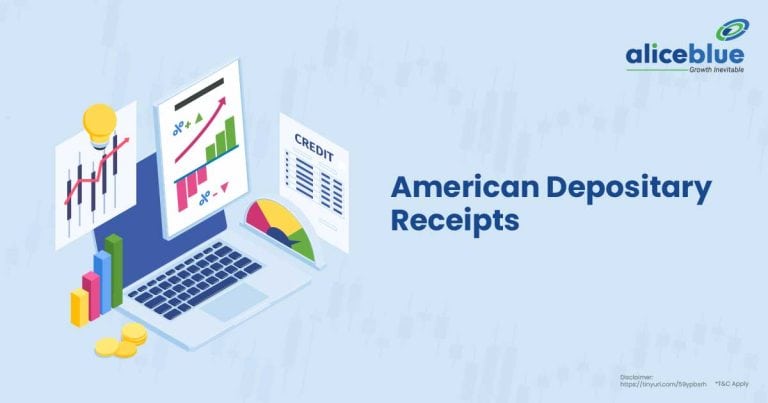The below table shows a list Of the Top Performing Multi Cap Funds in 10 Years Based on AUM, NAV and minimum SIP.
| Name | AUM (Cr) | NAV (Rs) | Minimum SIP (Rs) |
| Nippon India Multi Cap Fund | 37150.98 | 321.26 | 1500 |
| SBI Multicap Fund | 17007.26 | 16.83 | 3000 |
| HDFC Multi Cap Fund | 15564.10 | 20.09 | 2500 |
| ICICI Pru Multicap Fund | 13920.86 | 883.77 | 500 |
| Quant Active Fund | 11249.35 | 778.33 | 1000 |
| Mahindra Manulife Multi Cap Fund | 4416.50 | 41.37 | 500 |
| Invesco India Multicap Fund | 3736.34 | 155.80 | 100 |
| Sundaram Multi Cap Fund | 2724.92 | 417.88 | 100 |
| Baroda BNP Paribas Multi Cap Fund | 2689.72 | 321.55 | 500 |
| ITI Multi-Cap Fund | 1364.42 | 27.38 | 500 |
Introduction to Top Performing Multi Cap Funds in 10 Years
Nippon India Multi Cap Fund
Nippon India Multi Cap Fund is a Multi Cap mutual fund scheme from Nippon India Mutual Fund. This fund has been operational for 11 years, having been launched on December 31, 2012.
Nippon India Multi Cap Fund falls under the Multi Cap Fund category with an AUM of ₹37,150.98 crores, a 5-year CAGR of 28.69%, an exit load of 1% and an expense ratio of 0.75%. The SEBI risk category is Very High. Its asset allocation includes 97.98% in Equity and 2.02% in Cash & Equivalents.
SBI Multicap Fund
SBI Multicap Fund is a multi-cap mutual fund scheme from SBI Mutual Fund. This fund has been operational for 2 years and 6 months, having been launched on March 8, 2022.
SBI Multicap Fund falls under the Multi Cap Fund category with an AUM of ₹17,007.26 crores, with an expense ratio of 0.9%. The SEBI risk category is Very High. Its asset allocation includes 94.89% in Equity, 4.56% in Cash & Equivalents and 0.55% in Government Securities.
HDFC Multi Cap Fund
HDFC Multi Cap Fund is a Multi Cap mutual fund scheme from HDFC Mutual Fund. This fund has been operational for 2 years and 10 months, having been launched on November 22, 2021.
HDFC Multi Cap Fund falls under the Multi Cap Fund category with an AUM of ₹15,564.10 crores, with an expense ratio of 0.55%. The SEBI risk category is Very High. Its asset allocation includes 96.73% in Equity, 2.77% in Cash & Equivalents and 0.50% in REITs & InvIT.
ICICI Prudential Multicap Fund
ICICI Prudential Multicap Fund is a multi-cap mutual fund scheme from ICICI Prudential Mutual Fund. This fund has been operational for 11 years and 8 months, having been launched on January 1, 2013.
ICICI Prudential Multicap Fund falls under the Multi Cap Fund category with an AUM of ₹13,920.86 crores, a 5-year CAGR of 25.42%, an exit load of 1% and an expense ratio of 0.94%. The SEBI risk category is Very High. Its asset allocation includes 89.35% in Equity, 9.09% in Cash & Equivalents and 1.55% in Treasury Bills.
Quant Active Fund
Quant Active Fund is a multi-cap mutual fund scheme from Quant Mutual Fund. This fund has been operational for 10 years, having been launched on January 7, 2013.
Quant Active Fund falls under the Multi Cap Fund category with an AUM of ₹11,249.35 crores, a 5-year CAGR of 36.25%, an exit load of 1% and an expense ratio of 0.58%. The SEBI risk category is Very High. Its asset allocation includes 83.28% in Equity, 8.43% in Cash & Equivalents, 6.09% in Futures & Options and 2.20% in Treasury Bills.
Mahindra Manulife Multi Cap Fund
Mahindra Manulife Multi Cap Fund is a Multi Cap mutual fund scheme from Mahindra Manulife Mutual Fund. This fund has been operational for 7 years and 4 months, having been launched on April 20, 2017.
Mahindra Manulife Multi Cap Fund falls under the Multi Cap Fund category with an AUM of ₹4,416.50 crores, a 5-year CAGR of 31.03%, an exit load of 1% and an expense ratio of 0.37%. The SEBI risk category is Very High. Its asset allocation includes 97.80% in Equity, 2.18% in Cash & Equivalents and 0.02% in Rights.
Invesco India Multicap Fund
Invesco India Multicap Fund is a multi-cap mutual fund scheme from Invesco Mutual Fund. This fund has been operational for 11 years and 8 months, having been launched on January 1, 2013.
Invesco India Multicap Fund falls under the Multi Cap Fund category with an AUM of ₹3,736.34 crores, a 5-year CAGR of 26.98%, an exit load of 1% and an expense ratio of 0.66%. The SEBI risk category is Very High. Its asset allocation includes 94.29% in Equity, 3.27% in Cash & Equivalents and 2.44% in Rights.
Sundaram Multi Cap Fund
Sundaram Multi Cap Fund is a Multi Cap mutual fund scheme from Sundaram Mutual Fund. This fund has been operational for 10 years, having been launched on January 2, 2013.
Sundaram Multi Cap Fund falls under the Multi Cap Fund category with an AUM of ₹2,724.92 crores, a 5-year CAGR of 25.38%, an exit load of 1% and an expense ratio of 0.88%. The SEBI risk category is Very High. Its asset allocation includes 95.94% in Equity and 4.06% in Cash & Equivalents.
Baroda BNP Paribas Multi Cap Fund
Baroda BNP Paribas Multi Cap Fund is a Multi Cap mutual fund scheme from Baroda BNP Paribas Mutual Fund. This fund has been operational for 10 years, having been launched on January 2, 2013.
Baroda BNP Paribas Multi Cap Fund falls under the Multi Cap Fund category with an AUM of ₹2,689.72 crores, a 5-year CAGR of 27.19%, an exit load of 1% and an expense ratio of 1.01%. The SEBI risk category is Very High. Its asset allocation includes 96.41% in Equity, 2.87% in Cash & Equivalents, and 0.72% in Futures & Options and Treasury Bills.
ITI Multi-Cap Fund
ITI Multi-Cap Fund is a multi-cap mutual fund scheme from ITI Mutual Fund. This fund has been operational for 4 years and 4 months, having been launched on May 15, 2019.
ITI Multi-Cap Fund falls under the Multi Cap Fund category with an AUM of ₹1,364.42 crores, a 5-year CAGR of 22.52%, an exit load of 1% and an expense ratio of 0.5%. The SEBI risk category is Very High. Its asset allocation includes 96.70% in Equity, 3.25% in Cash & Equivalents and 0.05% in Rights.

What Are Multi Cap Funds?
Multi-cap funds are mutual funds that invest across companies of varying market capitalizations, including large-cap, mid-cap and small-cap stocks. These funds offer diversification across different segments of the market, aiming to capture growth opportunities while managing risk.
Multi-cap funds typically have the flexibility to adjust their allocation between different market caps based on market conditions and the fund manager’s outlook. This allows them to potentially benefit from various market scenarios.
These funds can provide a balanced approach to equity investing, offering the stability of large-caps, the growth potential of mid-caps and the high-growth opportunities of small-caps within a single portfolio.
Features Of Top Performing Multi Cap Funds in 10 Years
The main features of top-performing Multi Cap Funds over 10 years include diversification across market caps, flexibility in allocation, the potential for consistent returns, a balanced risk-reward profile and the ability to capture opportunities across market segments.
- Diversification: These funds invest across large, mid, and small-cap stocks, providing broad market exposure and reducing concentration risk.
- Allocation Flexibility: Top-performing Multi Cap Funds can adjust their allocation between different market caps based on market conditions and opportunities.
- Consistent Performance: These funds aim to deliver consistent returns by balancing the stability of large caps with the growth potential of mid and small-caps.
- Balanced Risk-Reward: Multi-cap funds offer a balanced approach, potentially providing better risk-adjusted returns compared to single-cap-focused funds.
- Market Opportunity Capture: These funds can capitalize on opportunities across various market segments, adapting to changing market dynamics.
Best Performing Multi Cap Funds in 10 Years
The table below shows the best-performing multi-cap funds in 10 Years Based on the lowest to highest expense ratio.
| Name | Expense Ratio (%) | Minimum SIP (Rs) |
| Mahindra Manulife Multi Cap Fund | 0.37 | 500 |
| ITI Multi-Cap Fund | 0.5 | 500 |
| HDFC Multi Cap Fund | 0.55 | 2500 |
| Quant Active Fund | 0.58 | 1000 |
| Invesco India Multicap Fund | 0.66 | 100 |
| Nippon India Multi Cap Fund | 0.75 | 1500 |
| Sundaram Multi Cap Fund | 0.88 | 100 |
| SBI Multicap Fund | 0.9 | 3000 |
| ICICI Pru Multicap Fund | 0.94 | 500 |
| Baroda BNP Paribas Multi Cap Fund | 1.01 | 500 |
Top Performing Multi Cap Funds in 10 Years In India
The table below shows the top-performing multi-cap funds in 10 Years In India Based on the Highest 3Y CAGR.
| Name | CAGR 3Y (Cr) | Minimum SIP (Rs) |
| Nippon India Multi Cap Fund | 32.34 | 1500 |
| Quant Active Fund | 27.11 | 1000 |
| Mahindra Manulife Multi Cap Fund | 26.85 | 500 |
| ICICI Pru Multicap Fund | 25.76 | 500 |
| Baroda BNP Paribas Multi Cap Fund | 24.97 | 500 |
| ITI Multi-Cap Fund | 24.27 | 500 |
| Invesco India Multicap Fund | 22.98 | 100 |
| Sundaram Multi Cap Fund | 22.45 | 100 |
Top Performing Multi Cap Funds in 10 Years
The table below shows Top Performing Multi Cap Funds in 10 Years based on exit load, i.e., the fee that the AMC charges investors when they exit or redeem their fund units.
| Name | AMC | Exit Load (%) |
| Nippon India Multi Cap Fund | Nippon Life India Asset Management Limited | 1 |
| Quant Active Fund | Quant Money Managers Limited | 1 |
| Mahindra Manulife Multi Cap Fund | Mahindra Manulife Investment Management Private Limited | 1 |
| ICICI Pru Multicap Fund | ICICI Prudential Asset Management Company Limited | 1 |
| Baroda BNP Paribas Multi Cap Fund | Baroda BNP Paribas Asset Management India Pvt. Ltd. | 1 |
| ITI Multi-Cap Fund | ITI Asset Management Limited | 1 |
| Invesco India Multicap Fund | Invesco Asset Management Company Pvt Ltd. | 1 |
| Sundaram Multi Cap Fund | Sundaram Asset Management Company Limited | 1 |
| HDFC Multi Cap Fund | HDFC Asset Management Company Limited | 1 |
| SBI Multicap Fund | SBI Funds Management Limited | 1 |
Factors To Consider When Investing In Top Performing Multi Cap Funds in 10 Years
The main factors to consider when investing in top-performing Multi Cap Funds over 10 years include historical performance, fund manager expertise, asset allocation strategy, risk-adjusted returns, expense ratio and alignment with your investment goals and risk tolerance.
- Historical Performance: Evaluate the fund’s long-term track record, comparing returns against relevant benchmarks and peer funds to assess consistency and outperformance over various market cycles.
- Fund Manager Expertise: Research the fund manager’s experience and success in navigating different market caps and adjusting allocations based on market conditions.
- Asset Allocation Strategy: Examine how the fund allocates assets across different market caps and how this strategy has performed over time.
- Risk-Adjusted Returns: Analyze risk-adjusted metrics like Sharpe ratio and standard deviation to understand how well the fund balances returns with risk management.
- Expense Ratio: Consider the fund’s expense ratio, as lower fees can significantly impact long-term returns. Compare costs across similar funds to ensure value for money.
How To Invest In Top Performing Multi Cap Funds in 10 Years?
To invest in top-performing Multi Cap Funds over 10 years, start by researching funds with consistent long-term performance. Consider factors like expense ratios, fund manager expertise and risk-adjusted returns. Align the investment with your financial goals and risk tolerance.
Choose between lump sum investments or Systematic Investment Plans (SIPs) based on your financial situation. SIPs can be particularly beneficial for Multi Cap Funds, allowing you to average out the impact of market volatility over time.
Open an account with Alice Blue. Complete the necessary documentation, including KYC requirements and initiate your investment. Regularly review and rebalance your portfolio as needed, keeping in mind the fund’s allocation across different market caps.
Advantages Of Investing In Top Performing Multi Cap Funds in 10 Years
The main advantages of investing in top-performing Multi Cap Funds over 10 years include diversification benefits, flexibility in allocation, potential for consistent returns, balanced risk-reward profile and exposure to various market segments.
- Diversification: Multi-cap funds provide exposure to different market segments, potentially reducing overall portfolio risk.
- Allocation Flexibility: These funds can adjust their allocation between large, mid and small caps based on market conditions, potentially optimizing returns.
- Consistent Performance: By balancing stability and growth potential, Multi Cap Funds aim to deliver more consistent returns over various market cycles.
- Balanced Risk-Reward: These funds offer a middle ground between the relative stability of large caps and the high growth potential of small caps.
- Market Opportunity Capture: Multi-cap funds can capitalize on opportunities across various market segments, adapting to changing market dynamics.
Risks Of Investing In Top Performing Multi Cap Funds in 10 Years?
The main risks of investing in top-performing Multi Cap Funds over 10 years include market risk, potential for underperformance in certain market conditions, dependence on fund manager’s decisions, sector concentration risk and impact of regulatory changes.
- Market Risk: Like all equity funds, Multi Cap Funds are subject to market volatility and can experience significant fluctuations in value.
- Underperformance Risk: The fund may underperform if its allocation strategy doesn’t align with prevailing market trends.
- Manager Dependence: The fund’s performance heavily relies on the fund manager’s decisions regarding allocation across market caps.
- Sector Concentration: Some Multi Cap Funds may have higher exposure to certain sectors, potentially increasing risk if these sectors underperform.
- Regulatory Impact: Changes in regulations regarding fund categorization or allocation requirements can impact the fund’s strategy and performance.
Importance of Multi Cap Funds
The main importance of Multi Cap Funds lies in their ability to provide diversified exposure across market caps, offer a balanced approach to equity investing, adapt to changing market conditions and potentially deliver consistent long-term returns.
- Diversification: Multi-cap funds spread investments across large, mid and small-cap stocks, potentially reducing overall portfolio risk.
- Balanced Approach: These funds offer a middle ground between the stability of large caps and the growth potential of smaller companies.
- Adaptability: Multi-cap funds can adjust their allocation based on market conditions, potentially capitalizing on opportunities across different market segments.
- Consistent Returns: By balancing different market caps, these funds aim to deliver more consistent returns over various market cycles.
- Simplified Investing: For investors seeking broad market exposure, Multi Cap Funds offer a convenient way to invest across market caps through a single fund.
How Long to Stay Invested in Multi Cap Funds?
Investors should generally stay invested in Multi Cap Funds for at least 5-7 years to fully capitalize on their growth potential and ride out short-term market volatility. This long-term approach allows time for the fund to navigate various market cycles and for its diversification benefits to take effect.
A longer investment horizon helps smooth out the inherent volatility of equity markets and allows the fund manager’s strategy to play out across different market conditions. It also aligns with the typical investment horizon recommended for equity investments in general.
Tax Implications of Investing in Multi-Cap Funds
Investments in Multi Cap Funds are subject to capital gains tax. For holdings less than one year, short-term capital gains are taxed at 15%. For holdings over one year, long-term capital gains up to ₹1 lakh per year are tax-free, while gains above this threshold are taxed at 10%.
Dividends received from Multi Cap Funds are taxable in the hands of investors at their applicable income tax slab rates. It’s advisable to consult a tax professional for personalized advice based on your specific financial situation and the latest tax regulations.
Future of Multi Cap Funds
The future of Multi Cap Funds looks promising, as they offer a balanced approach to equity investing that can adapt to changing market conditions. These funds are well-positioned to capture opportunities across different market segments as India’s economy continues to evolve and mature.
As markets become more complex, the flexibility of Multi Cap Funds to adjust allocations across market caps may become increasingly valuable. However, investors should stay informed about any regulatory changes that could impact the fund’s structure or strategy.

Top Performing Multi Cap Funds in 10 Years FAQs
Multi-cap funds are equity mutual funds that invest across companies of different market capitalizations—large, mid and small caps. This diversified approach helps manage risk while aiming for higher returns. These funds offer flexibility and adaptability to changing market conditions, making them versatile investment options.
Top Performing Multi Cap Funds in 10 Years #1: Nippon India Multi Cap Fund
Top Performing Multi Cap Funds in 10 Years #2: SBI Multicap Fund
Top Performing Multi Cap Funds in 10 Years #3: HDFC Multi Cap Fund
Top Performing Multi Cap Funds in 10 Years #4: ICICI Pru Multicap Fund
Top Performing Multi Cap Funds in 10 Years #5: Quant Active Fund
These funds are listed based on the Highest AUM.
The best performing multi-cap funds over 10 years, based on their expense ratio, are Mahindra Manulife Multi Cap Fund, ITI Multi-Cap Fund, HDFC Multi Cap Fund, Quant Active Fund and Invesco India Multicap Fund. These funds offer competitive growth with relatively lower expense ratios, optimizing returns.
To invest in top-performing Multi Cap Funds, research funds with consistent long-term returns, consider expense ratios and fund manager expertise. Open an account with Alice Blue, complete KYC requirements and start investing through lump sum or SIP options.
Investing in top-performing Multi Cap Funds over 10 years can be beneficial for long-term wealth creation, offering diversified exposure across market caps. However, consider your risk tolerance and financial goals before investing.
Yes, you can buy top-performing Multi Cap Funds with a 10-year track record. Research funds through reliable financial websites, consult with a financial advisor if needed and invest through Alice Blue or directly with fund houses.
We hope you’re clear on the topic, but there’s more to explore in stocks, commodities, mutual funds, and related areas. Here are important topics to learn about.
Disclaimer: The above article is written for educational purposes and the companies’ data mentioned in the article may change with respect to time. The securities quoted are exemplary and are not recommendatory.








